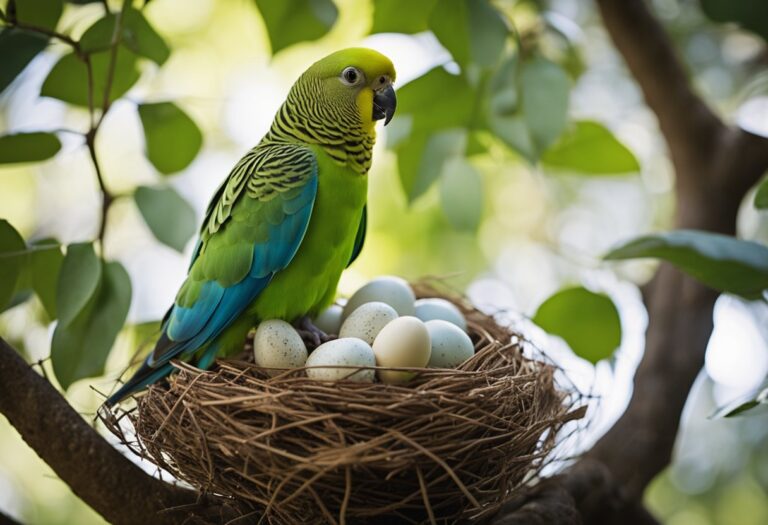When it comes to the giants of our skies, several birds compete for the title of the largest flying bird in the world. The answer depends on how we measure “largest” – by wingspan, weight, or height. The wandering albatross holds the record for the largest wingspan of any living bird, with some individuals stretching up to 12 feet (3.66 meters) from wingtip to wingtip, according to the Guinness Book of Records.

Weight and height introduce different champions. The Andean condor is considered the largest flying bird by combined measurement of weight and wingspan, with a maximum wingspan of 3.3 meters. For height, the sarus crane takes the crown as the tallest flying bird, reaching up to 1.8 meters. Other impressive aerial giants include the Dalmatian pelican with wingspans up to 3.2 meters.
Key Takeaways
- The wandering albatross has the largest wingspan of any living bird at up to 12 feet (3.66 meters).
- Different measurements yield different “largest” birds, with the Andean condor winning for combined weight and wingspan.
- Large flying birds have evolved specialized adaptations for efficient flight despite their impressive size.
Historical Giants of the Skies
The ancient skies were once ruled by enormous flying birds that dwarf today’s largest species. These prehistoric giants achieved impressive wingspans and weights that pushed the limits of flight physics.
Argentavis and the Pelagornithids
Argentavis magnificens lived about 6-8 million years ago during the Late Miocene period in Argentina. This colossal bird held the record for the heaviest flying bird until recent discoveries. With a wingspan reaching up to 7 meters (23 feet) and weighing approximately 70-72 kg (154-159 pounds), it soared over prehistoric South America.
The Pelagornithids, often called “bony-toothed birds,” were another group of aerial giants. The most remarkable member, Pelagornis sandersi, lived about 25 million years ago. This massive seabird had a wingspan of 6.1-7.4 meters (20-24 feet), exceeding that of today’s wandering albatross.
Pelagornithids featured unique bony projections on their beaks that resembled teeth, an adaptation for catching slippery prey from oceans.
Discoveries and Fossil Records
The first Argentavis fossils were discovered in Argentina’s Epecuén Formation in the 1980s. Paleontologists were astonished by the bird’s size, which initially raised questions about its ability to fly. Computer modeling later confirmed that Argentavis could indeed achieve sustainable flight using thermal updrafts.
Pelagornithid fossils have been found on all continents, indicating their global distribution. The most complete Pelagornis sandersi specimen was discovered in 1983 in Charleston, South Carolina, but wasn’t fully described until 2014.
Fossil records show these birds had hollow bones, an essential adaptation for flight despite their enormous size. Their wing structures suggest they were masters of gliding, using air currents to travel vast distances with minimal energy expenditure.
Contemporaries of the Air

The skies are home to several massive birds that compete for the title of largest flying bird. These impressive creatures have evolved remarkable adaptations that allow their substantial bodies to take flight.
The Albatross Family
The wandering albatross (Diomedea exulans) holds the record for the largest wingspan of any living bird. These oceanic giants can spread their wings up to 3.7 meters (12 ft 2 in) across. Their impressive wing length allows them to glide for hours without flapping.
Wandering albatrosses spend most of their lives soaring above the open ocean, using a flying technique called dynamic soaring. This method helps them cover vast distances while expending minimal energy.
The royal albatross, a close relative, also boasts an impressive wingspan of about 3.1 meters (10 ft). Both species belong to the Diomedeidae family, known for their exceptional flying abilities and longevity.
Albatrosses have specialized shoulder joints that lock their wings in an extended position, allowing them to soar effortlessly on ocean winds.
The Andean Condor and the California Condor
The Andean condor (Vultur gryphus) is the largest flying bird in the Western hemisphere when considering both weight and wingspan together. These massive vultures can weigh up to 15 kg (33 pounds) with a wingspan reaching 3.3 meters (10 ft 10 in).
Male Andean condors are larger than females, with distinctive fleshy combs on their heads. They inhabit the Andes mountains of South America, where they ride thermal currents to search for carrion.
The California condor, its North American cousin, nearly went extinct in the 1980s. After intensive conservation efforts, these birds with 3-meter (9.8 ft) wingspans are slowly recovering in the wild.
Both condor species are remarkable for their size and longevity, potentially living 50+ years in the wild.
Kori Bustard: Grounded Yet Majestic
The kori bustard (Ardeotis kori) presents an interesting case among large flying birds. Native to Africa, it is the heaviest flying bird capable of flight, with males weighing up to 18 kg (40 pounds).
Despite their impressive size, kori bustards are reluctant fliers. They prefer to walk across the African savanna, using flight mainly to escape danger or to reach roosting sites.
When they do take to the air, their flight is labored and usually brief. Their wings generate powerful downstrokes needed to lift their substantial weight.
Kori bustards have a distinctive courtship display where males inflate their necks dramatically to attract females. These birds represent an evolutionary balance between the advantages of large size and the challenges of maintaining flight ability.
Physiology and Adaptations
The world’s largest flying birds have developed remarkable physical traits and behaviors that enable their massive bodies to navigate through air. These adaptations allow them to conserve energy while covering vast territories and reaching impressive altitudes.
Soaring to Great Heights
The Rüppell’s vulture holds the record for highest flight, despite not being the largest flying bird. These birds can reach altitudes of 37,000 feet, where oxygen levels are dangerously low for most creatures.
The Andean condor, one of the world’s largest flying birds with a wingspan of 3.3 meters (10 ft 10 in), can soar at heights over 15,000 feet. This impressive altitude capability comes from several adaptations:
- Specialized hemoglobin that binds oxygen more efficiently
- Larger lung capacity relative to body size
- Hollow bones that reduce weight while maintaining strength
- Efficient respiratory system that extracts more oxygen from each breath
These birds minimize energy expenditure by using thermal updrafts and wind currents rather than constant wing flapping.
Territory and Flight Range
Giant birds like the extinct Argentavis magnificens, estimated to weigh 70-72 kg with a wingspan of around 7 meters, required vast territories to sustain their enormous energy needs. Modern large birds show similar patterns.
The Andean condor’s territory can span hundreds of square kilometers. These birds may travel over 200 km (124 miles) in a single day searching for food. Their efficient soaring technique allows them to cover this range while expending minimal energy.
Territory size correlates strongly with:
- Food availability and distribution
- Breeding site preferences
- Competition with other large birds
- Seasonal migration patterns
The kori bustard, considered the heaviest flying bird today, maintains smaller territories due to its different hunting strategy and flight capabilities.
Frequently Asked Questions
Flying birds come in many impressive sizes across the world, with certain species standing out for their remarkable wingspans, weights, and overall dimensions. These questions address the largest birds taking to our skies today and those that soared in prehistoric times.
Which flying bird today holds the record for wingspan?
The wandering albatross currently holds the record for the largest wingspan among living flying birds. These magnificent seabirds can reach wingspans of up to 3.7 meters (12 feet).
The wandering albatross uses its enormous wings to glide effortlessly over the ocean for hours without flapping. These birds spend most of their lives at sea, coming to land only to breed.
How does the Andean condor compare to other large flying birds in size?
The Andean condor ranks among the world’s largest flying birds, with an impressive wingspan of about 3.3 meters (10.8 feet). While not matching the wandering albatross in wingspan, the Andean condor is more massive in body size.
These birds weigh approximately 11-15 kg (24-33 pounds), making them heavier than many other large flying birds. The Andean condor’s remarkable size allows it to soar on thermal currents in the Andes Mountains with minimal energy expenditure.
What are the top ten largest flying birds currently inhabiting the Earth?
The top ten largest flying birds include impressive species like the wandering albatross, Andean condor, and great white pelican. The great white pelican has a wingspan of about 3.7 meters (12 feet), placing it among the world’s largest flying birds.
Other birds in this elite group include the marabou stork, Dalmatian pelican, and southern royal albatross. The list continues with the California condor, whooper swan, trumpeter swan, and kori bustard.
The kori bustard deserves special mention as the heaviest flying bird, despite not having the largest wingspan.
Among extinct birds, which was the largest that could fly?
Pelagornis sandersi was the largest flying bird ever known to exist, living approximately 25 million years ago. Scientists estimate its wingspan reached an astonishing 6.1-7.4 meters (20-24 feet).
Another contender is Argentavis magnificens, which lived approximately 6 million years ago in Argentina. With an estimated wingspan of about 7 meters (23 feet) and weighing around 70 kg (154 pounds), it dwarfed all modern flying birds.
What bird has the greatest weight and still is able to fly?
The kori bustard holds the title of heaviest flying bird alive today. Males can weigh up to 18 kg (40 pounds), though they typically range between 11-16 kg (24-35 pounds).
Despite their impressive weight, kori bustards can still take to the air, though they prefer walking and only fly when necessary. Their heavy build means they must run to gain momentum before becoming airborne, and they rarely fly long distances.
How do the sizes of a condor and an albatross differ?
Condors and albatrosses differ primarily in their body proportions and adaptations. Condors, like the Andean and California species, have heavier, more robust bodies with broader wings designed for soaring over land.
Albatrosses, particularly the wandering albatross, have longer, narrower wings optimized for efficient gliding over ocean surfaces. While albatrosses exceed condors in wingspan (up to 3.7 meters vs 3.3 meters), condors generally have heavier body weights and larger overall body sizes.






